
Regional Geology of North America |
Great Valley Province |
Click on images for a |
| The Great Valley is low low plains region on the west side of the Sierra Nevada Range and east of the Coast Ranges in central and northern California. It is divided into two parts, the Sacramento Valley is north of the Sacramento River, and the San Joachin Valley extends southward from the Sacramento River to the Tehachapi Mountains near Bakersfield near its southern end (Figure 248). Before the end of subduction and the formation of the San Andreas Fault, the Great Valley was part of the continental shelf and foreland basin. A thick sequence of marine sedimentary deposits accumulated in the foreland basin and is called the Great Valley Sequence (Figure 249). As the San Andreas Fault system developed, the Coast Ranges gradually formed, and the Great Valley deposits transitioned from marginal marine to terrestrial environment. The Great Valley was flooded by large lakes during the Ice Ages, and parts of the valley were flooded by shallow lakes up until historic times. Tulare Lake was the largest freshwater lake west of the Mississippi River until the Kern River was diverted for agricultural irrigation and municipal water uses. The Great Valley is very prone to flooding... and droughts. Few regions of the world have undergone as much modification of the natural drainage system. With ample sunshine, warm climate year round, and when water is available, the Great Valley is one of the most productive agricultural regions of the world. The Sacramento Valley was host to the start of Gold Rush of 1849 that started a major human migration to California. The southern San Joachin Valley has historically been one of the largest oil producing basins in California (Figure 250). Oil production is mostly from Miocene and older age marine sediments with oil reservoirs located along the crests and margins of great anticlines along the basin. Tectonic folding and faulting along the San Andreas Fault and associated faults are actively pushing up the Coast Ranges. Near the south end of the Great Valley is Carrizo Plain National Monument. Because of the very arid climate, the park preserves exception geologic features associated with motion and changes associated with great earthquakes on the San Andreas Fault (Figure 251). Interstate 5 runs north-south along the western side of the Great Valley between Bakersfield and Stockton. Along the interstate, the foothills of the coast ranges rise to the west in a series of hills and ridges include, from south to north, the Kettleman Hills, Tume Hills, and Panoche Hills. These rolling hills, badlands, and cattle rangelands are a stark contrast to the flat agricultural lands east of the interstate. Gently to steeply dipping layers of the Great Valley Sequence are well exposed in these areas (Figure 252). |
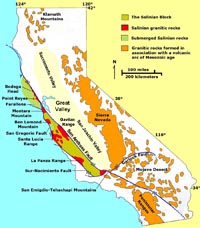 Fig. 248. Map showing the relationship of the Sierra Nevada, Great Valley, and Coast Ranges relative to the San Andreas Fault system. Rocks on the west side of the San Andreas Fault have moved (and are moving) northward relative to rocks east of the fault. |
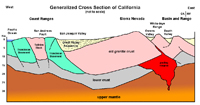 Fig. 249. Generalized cross section through central California. |
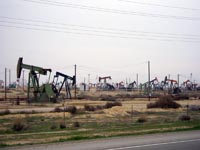 Fig. 250. One of many oil fields in the San Joachin Basin near Bakersfield, California. Oil production has been going on since the 1920s in the region. Fig. 250. One of many oil fields in the San Joachin Basin near Bakersfield, California. Oil production has been going on since the 1920s in the region. |
||
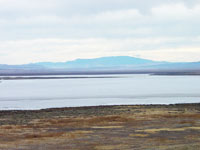 Fig. 251. Soda Lake episodically floods a shallow basin next to the San Andreas Fault in Carrizo Plain National Monument. |
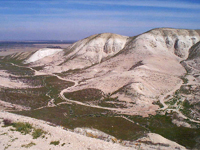 Fig. 252. Tertiary-age sediments of the Great Valley Sequence is exposed in the Tume Hills on the west side of the Great Valley. |
| https://gotbooks.miracosta.edu/geology/regions/great_valley.html 1/20/2017 |